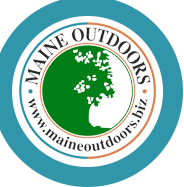Moose and puffins and eagles, oh my!
Natural abundance makes Maine ideal for wildlife watching
By Don Kleiner
When it comes to wildlife, Maine offers much to see, from seals and shorebirds along the coast to moose and loons inland. Wildlife populations can be seen in abundance statewide, including some species that can be seen nowhere else on the East Coast.
Maine’s exceptional variety and diversity of wildlife species are the result of a joining of several specific habitats. Maine’s 33,000 square miles range from sea level to cloud-capped mountains, and each change in elevation and geography brings with it its own unique variety of birds, mammals and fish. Add to this some 5,500 miles of rugged coast, 6,000 lakes and ponds and thousands of miles of rivers, all offering more opportunities for wildlife viewing. While large animals such as moose, seals, whales and bear are first on nearly everyone’s mind, other wildlife species offer simple viewing opportunities.
Maine is host to many species of raptors, including hawks, eagles, vultures, ospreys and falcons, often seen soaring high above on thermal currents. Rafts of eiders and other sea birds are visible along the coast. Graceful great blue herons can be observed wading in the shallows of ponds, lakes, rivers and wetlands, and loons can be seen in deeper water. The large pileated woodpecker, which lives throughout Maine’s woods, is a thrilling sight. Maine’s songbirds, particularly migrating warblers and many resident species, make the woods come alive with their melodious songs in the spring and summer.
The beaver, one of Maine’s most active animals, builds its home in streams, rivers and lakes. Look for dome-like lodges made of mud and sticks that can stand as high as five or six feet above the water’s surface. A sure sign of “beaver country” is finding sharpened and chewed sticks on the edge of the water that appear to have been whittled at the ends.
Luck helps when looking for certain animals or birds, but being in the right place at the right time can dramatically increase your odds. Ask locally for a good place to see the animals or birds that you would like to view. Outdoor-oriented businesses or local chambers of commerce are excellent sources for information on nearby wildlife viewing spots. Hiring a guide can make the trip more interesting and greatly improve your chances for success. A number of guides and outfitters offer wildlife-watching trips from moose safaris to seal-, puffin- or whale-watching tours.
There are a few simple things to keep in mind that will help you be more successful and add a great deal to your enjoyment of any outdoor experience.
--Animals are most active in the early morning or evening.
--Binoculars and field guides can add a great deal to your understanding and enjoyment.
--A camera will help you preserve your experience; a telephoto lens will help you capture pictures of distant animals.
--For your safety and the well being of the animals that you are watching, keep in mind that Maine’s animals are wild and should not be approached, fed or startled.
--For your safety and comfort, bring items such as water, sunscreen, insect repellent and extra clothing on your wildlife safari.
--Remember, 95% of Maine’s land is privately owned: Please respect the wishes of landowners.


